15 Ways to Break The Bad Eating Habits Behind Your Weight Gain
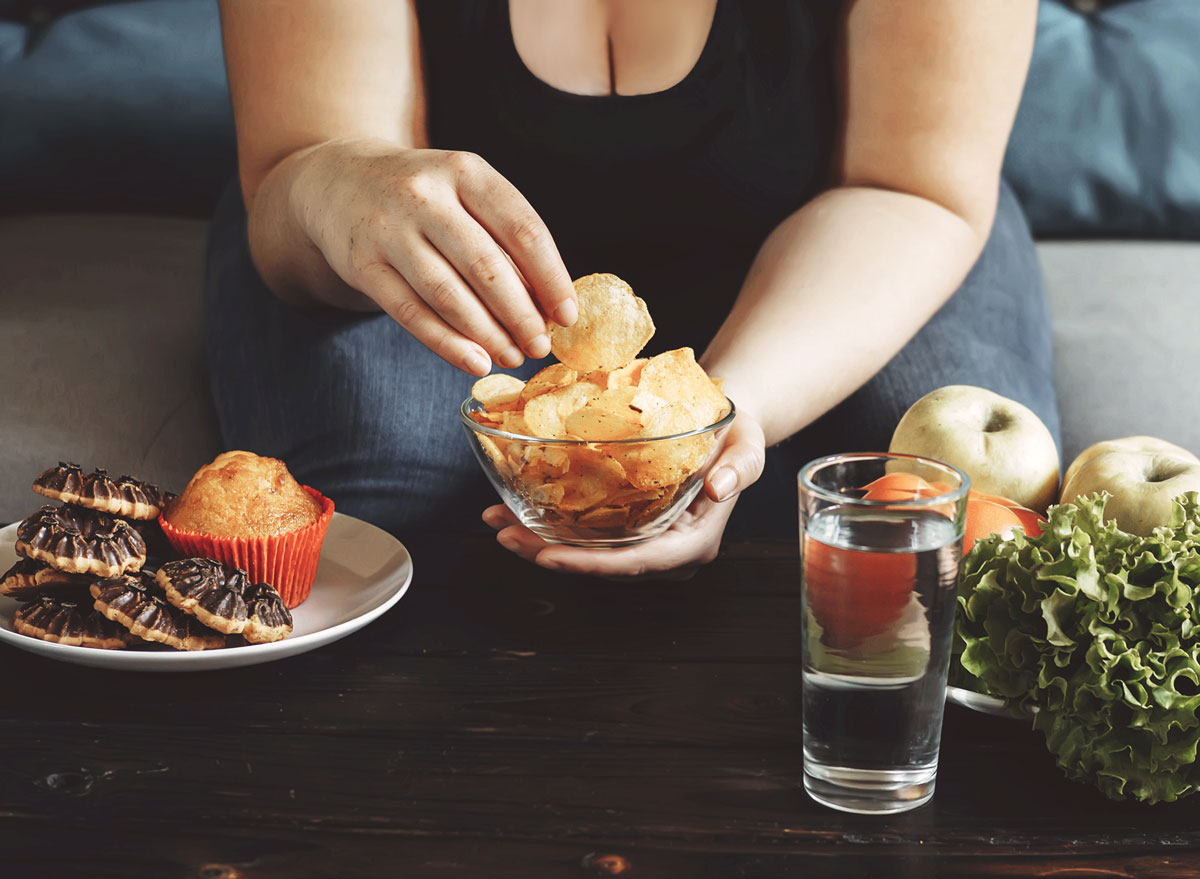
No matter how disciplined you might be about your sleep schedule or fitting in those morning workouts, there’s no denying the fact you’ve maintained a few bad eating habits throughout your weight-loss journey. But willpower isn’t always to blame. It’s also your brain’s fault.
You see, when you’ve trained your brain to do something, it ultimately becomes second nature. As a result, your noggin essentially shuts off when you undertake a habit—whether it’s brushing your teeth before bed or reaching for that mid-day soda—and it doesn’t exert the same control it would over more important, new things. One of those important, new things that it does seem to fight back against? A completely refurbished diet.
And that’s one of the reasons why dropping those pounds is so difficult. Most weight-loss routines begin by changing your diet. But many of those diet changes often take too much willpower to sustain in the long term. So while you might lose weight initially, it can just as easily come right back.
So we’re here to help you stay on track and break all of those unhealthy eating habits. Here are some of the most effective, science-backed strategies for how you can control your environment so you can break those waistline-destroying habits and start snacking smarter once and for all.
Want to continue the lifestyle overhaul? Read up on these 200 Best Weight Loss Tips.
Clean your kitchen
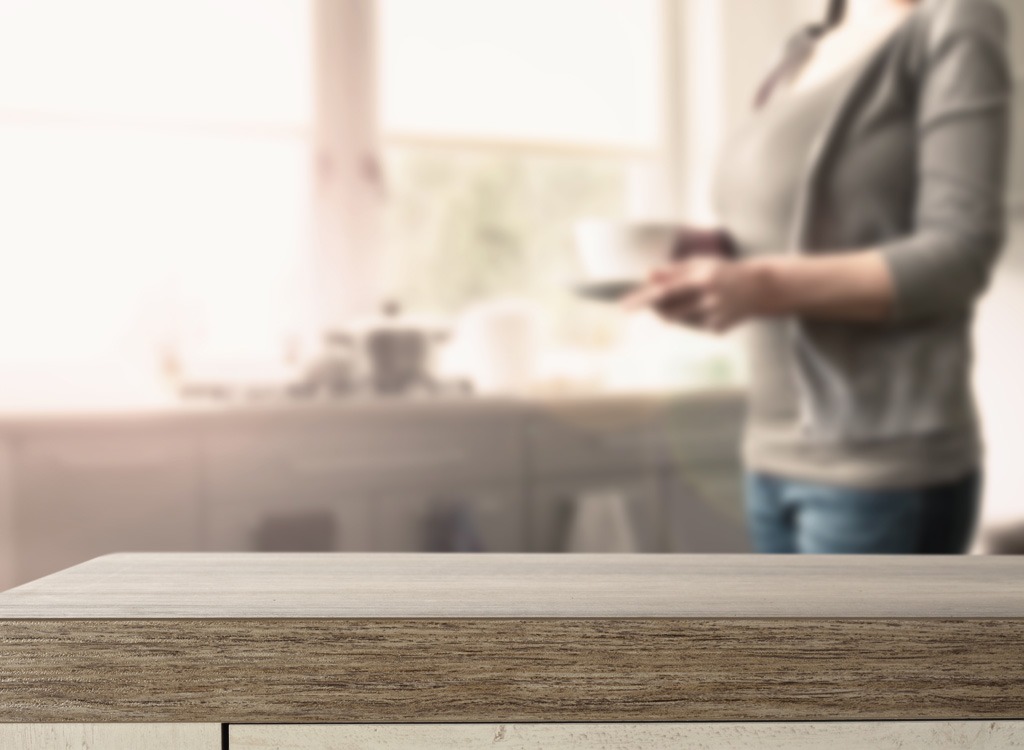
A study published in the journal Environment and Behavior found just being in a cluttered, messy kitchen can cause us to eat more. How much more? According to the study, 40 percent! Researchers gave snacks to 100 women, half of which were in a clean kitchen, and half of which were in a messy kitchen—strewn with mail, newspapers, and dirty dishes. Those in the messy kitchen consumed nearly twice as many calories from cookies as women in the tidy kitchen. And a separate, similar study done in an office, found that people in the orderly room were more inclined to choose a healthy snack like an apple.
Eat This! Tip: Whether it’s your kitchen, a workplace desk, or even your bedroom, make sure you’re keeping the places in your life neat and tidy to keep yourself from unnecessarily snacking.
STAY INFORMED: Sign up for our newsletter to get the latest food news delivered straight to your inbox.
Hide your vices

The foods that are easiest to reach for are the ones you’re most likely to take. A study conducted at Google’s New York office found that placing M&Ms in opaque containers as opposed to glass ones and giving healthier snacks more prominent shelf space curbed candy consumption by 3.1 million calories in just seven weeks. So what does that mean for your weight? Well a study by Eat This, Not That! magazine advisor Brian Wansink, director of the Cornell Food and Brand Lab, might have the answer. After analyzing photos of 200 kitchens, he found that women who have soda sitting on their countertops weigh an average of 26 pounds more, cereal an additional 20 pounds, and cookies about 8 pounds more. The lesson here is clear: Clear junk food off your countertops to start losing weight and to make better choices.
Eat This! Tip: We know snacking is important to maintain a revving metabolism, but that doesn’t mean once-in-awhile treats should constantly be sitting on your desk. Keep any foods that might sabotage your goals out of sight.
Prioritize your produce
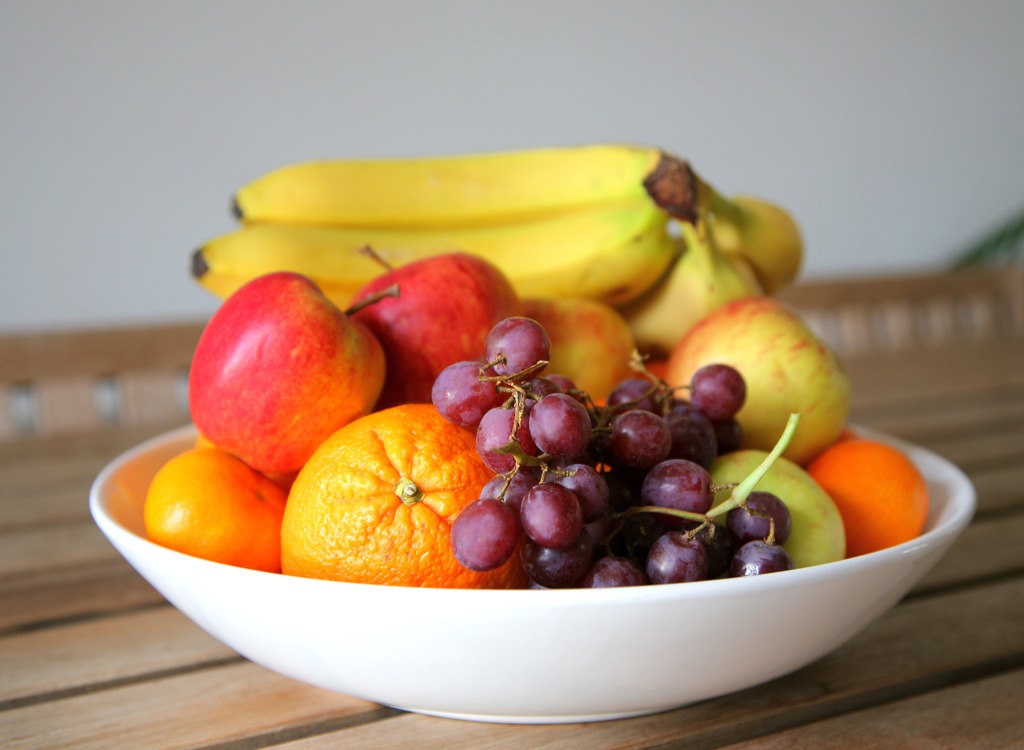
Simply reorganizing the most accessible foods in your pantry or which sit on your counter could translate into serious calorie savings. So after you remove the junk, replace it with a fruit bowl. You’re 70 percent more likely to grab fruits and veggies over less healthy options if they’re readily available or right in front of you, according to more of Wansink’s research.
Eat This! Tip: Place bowls of fruits out on the counter and swap those cookie containers with trail mix, popcorn, or any of these healthy snacks. You can even keep washed and prepared veggies like carrots, cucumbers, peppers, and snap peas with a tub of hummus in the front of the fridge so they aren’t overlooked.
Turn off the TV

Who knew: you don’t just eat with your eyes, researchers say you also eat with your ears! A new study, published in the journal Food Quality and Preference, tested how our perception of the sound of eating food affects our eating habits. They had two groups of participants eat crunchy foods, one with white-noise-producing headphones and the other without. These headphones were intended to mimic everyday behaviors of distracted eating, such as watching TV or listening to music while you eat. Participants who were distracted by white noise were less aware of the sound of the food, causing them to eat more than those who could hear the food they were eating.
Eat This! Tip: Turn off the TV (or Netflix, for all you cord-cutters out there) and lower the music during dinner. And if you’re out to dinner at a busy restaurant, maybe think about ordering something crunchy! As long as you can hear the food you are eating, it’ll make you aware of the fact that you’re actually eating food. When you’re unaware, you basically forget that you’re eating, which can lead to an increase in food consumption.
Change your plate size
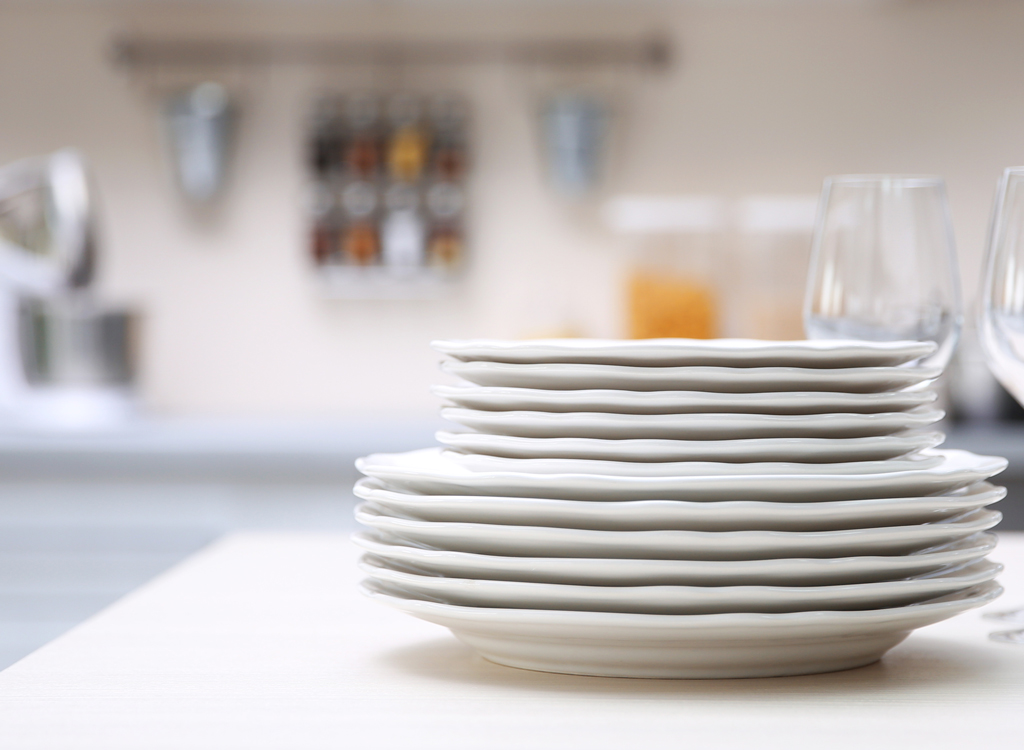
Oh, but you definitely eat with your eyes, too. When you serve yourself on a bigger plate, food appears smaller, which can lead to over searching and overeating. Contrarily, smaller plates make food servings appear significantly larger, tricking your mind into thinking you’re about to consume more calories than you really are. In one study, campers who were given larger bowls served themselves and consumed 16 percent more cereal than those given smaller bowls. Plus, “Starting small makes it less likely you will go for seconds, and forces you to check in once the plate is cleared before [filling up again],” says Lisa Hayim, RD.
Eat This! Tip: Swapping dinner plates for salad plates will help you eat more reasonable portions, which can help the pounds fly off your frame! Wansink’s research showed that simply using a smaller plate could cut down on food served by 22 percent.
Switch to a smaller glass

Those sparkling crystal glasses look mighty fine, but they might be influencing you to drink more than you should—which means you’ll end up consuming more nutrient-deficient calories. Another study by Wansink found that people automatically pour more liquid into short, wide glasses than in tall, skinny ones of the same volume.
Drink This! Tip: Just like you’ll hope to do with your body, swap your fat glasses out for leaner glasses and you could cut alcohol or sugary drink consumption by 10 percent—which will certainly do great things for your waistline—and health.
Use snack bags
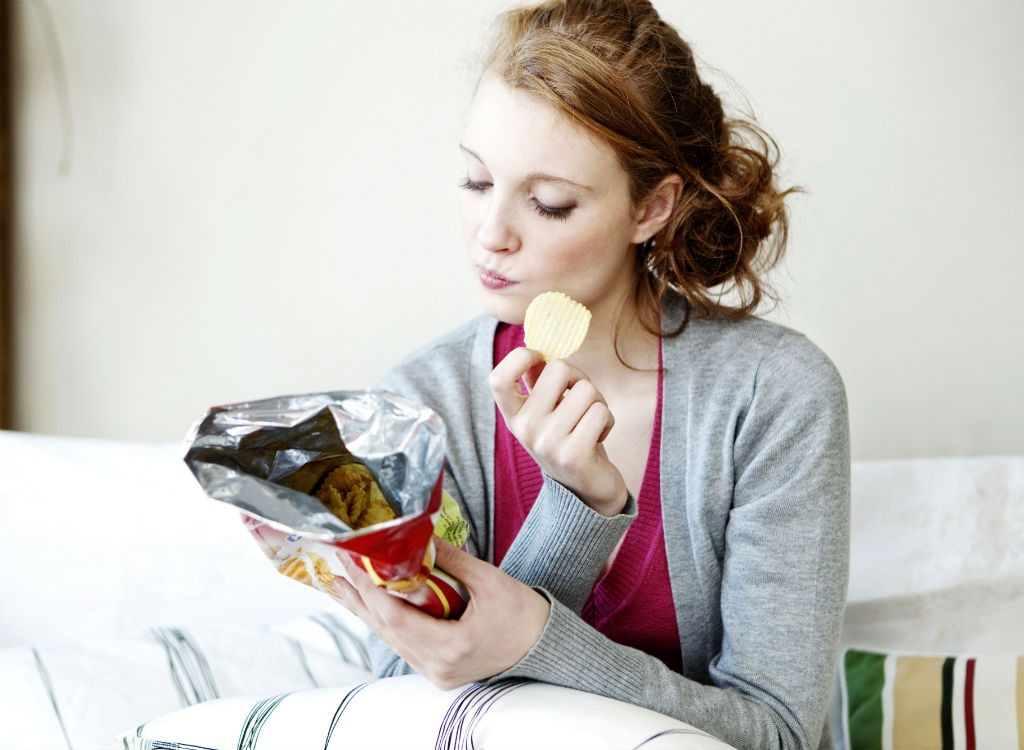
Changing your environment also means changing the portion sizes of the foods you tend to reach for. “Munching mindlessly straight out of a bag or box while you’re standing at the pantry deciding what you want to eat leads to overeating,” advise The Nutrition Twins, Lyssie Lakatos, RDN, CDN, CFT and Tammy Lakatos Shames, RDN, CDN, CFT. “Planning what you’re going to eat and sitting down to a predetermined portion on a plate eliminates this problem.” It’s even scientifically proven! In an experiment at the Cornell University food and brand lab, researchers gave study participants either a single bag containing 100 Wheat Thins or four smaller bags holding 25 each, waited for the munching to subside, then did a cracker count. The tally: Those given the jumbo bag consumed about 20 percent more.
Eat This! Tip: Individually portion out the foods you tend to overeat (and even the ones you don’t!) to the recommended serving size. You can even write a reminder of how many calories are in each by using a sharpie to write directly on the bag! Want more portion control tips? Check out our exclusive report, 18 Easy Ways to Control Portion Sizes.
Unfollow
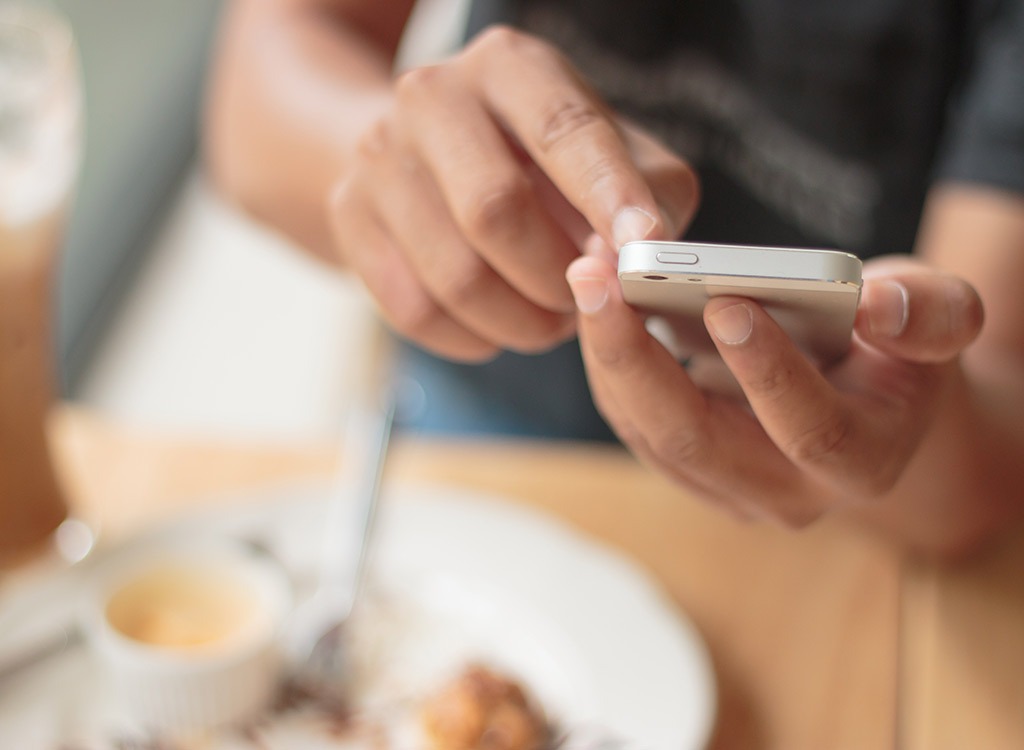
In this day and age, your phone is as much a part of your environment as it’s also an extension of your hand. And that’s not great news when you want to start eating healthier. As it turns out, scrolling through your social feeds is just as bad for your gut as seeking out those trending treats themselves. A review published in the journal Brain and Cognition found that when we see “food porn,” it exacerbates our desire for food through a channel of neural and physical responses called “visual hunger.” In other words, even if we’re not physically in need of food, our bodies will send a signal to our brains—via the hunger hormone ghrelin—that we want to eat.
Eat This! Tip: If you don’t want to end up eating the same high-energy, belly-busting foods you see in your Insta feed, unfollow! And start following accounts that highlight better-for-you choices: a study in Experimental Brain Research found that our brains don’t become as alert in response to seeing photos of low-energy, healthy foods like veggies, so you won’t be encouraged to eat when you aren’t hungry. (And you might be inspired for dinner later!)
Have a meal plan
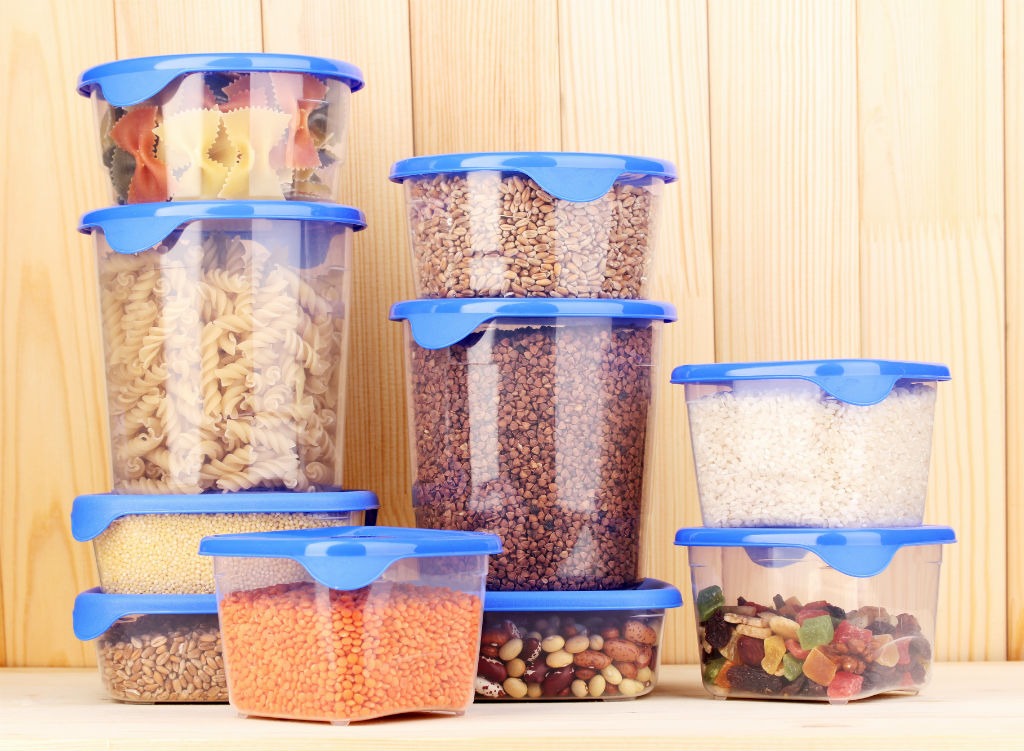
Variety might be the spice of life, but it’s a habit-breaker. Plus, planning out what you’re going to make every night—the day of—can be a pain. “Because we make approximately 200 food choices each day, we get fatigued towards the end of the day,” comments Julieanna Hever, MS, RD, CPT. “Meal planning is optimal to help you gain control of your overall food intake.” That’s right, it’s not bad news if you’ve fallen into the habit of buying, making, and eating the same foods every week. According to a survey of millions of Britons, 60 percent of adults eat the same dishes every week, and one in four adults even cooks the same meal on the same day. The reason? About one in five people claim that if they haven’t planned anything in advance they are more inclined to fall back on a frozen pizza, chips, or take-out. And experts agree!
Eat This! Tip: Have a few go-to meals you eat on a consistent basis. That way, you can conserve your willpower for more important decisions. You can even sort meals onto specific days. Taco Tuesday, anyone? Just make sure you’re packing plenty of colorful veggies into your meal plan, as eating the rainbow assures you’re getting an array of micronutrients. To get you started, check out our Realistic Flat-Belly Meal Plan for a Healthy Week.
Adopt eating rituals

Bad eating habits exert an impressionable influence on people who live in a non-patterned environment. And sometimes, we have no choice. When your job requires you to fly to another state every couple of weeks, or your kids’ sports schedules are always up in the air, it can be hard to keep a consistent, daily schedule. That’s why experts believe it’s important to establish eating rituals. Research suggests these rituals are a form of “mindful eating,” which have the power to make food more pleasurable, and may help prevent overeating. In one study, participants who were assigned to eat a chocolate bar in accordance with a particular breaking and unwrapping ritual found the candy much more enjoyable—and even more flavorful—than a group who ate the bar informally.
Eat This! Tip When you can, make an effort to sit at the table with your family during meals. Or, always step away from your desk during lunch and sit in the park. Removing yourself from work and other distractions and putting yourself in an environment that always means, “It’s time to eat,” will allow you to more mindfully focus on eating. That way, you won’t be irrationally snacking while you’re on the couch or blindly chowing down as you finish a project. That’s just one of the 21 Ways Your Job is Making You Fat.
Find your motivation

People often begin a diet for reasons other than for better health—whether it’s for an upcoming class reunion, a beach vacation, or a family wedding. The issue is that these short-term motivators come with finish lines; once you cross it, your reasons for losing weight fade into the distance. Until you find a new reason to drop the pounds, you become vulnerable to slipping back into old habits, and regaining the weight you just lost. “Researchers believe that reflecting on values can help maintain self-control in difficult situations,” says Cheryl Forberg, RD, and dietitian for the Biggest Loser. In fact, a recent study revealed that when women who were unhappy with their weight completed a one-time, 15-minute writing exercise about an important personal issue, they went on to lose at least 3 pounds over a three-month period while their counterparts who wrote about an unimportant topic gained 3 pounds.
Eat This! Tip To reap the benefits at home, Forberg suggests pulling out a journal, setting a timer and jotting down everything that’s important to you. “Write as though no one else will read it. Come clean with what’s bugging you. It may surprise and enlighten you,” adds Forberg.
Keep a stocked pantry
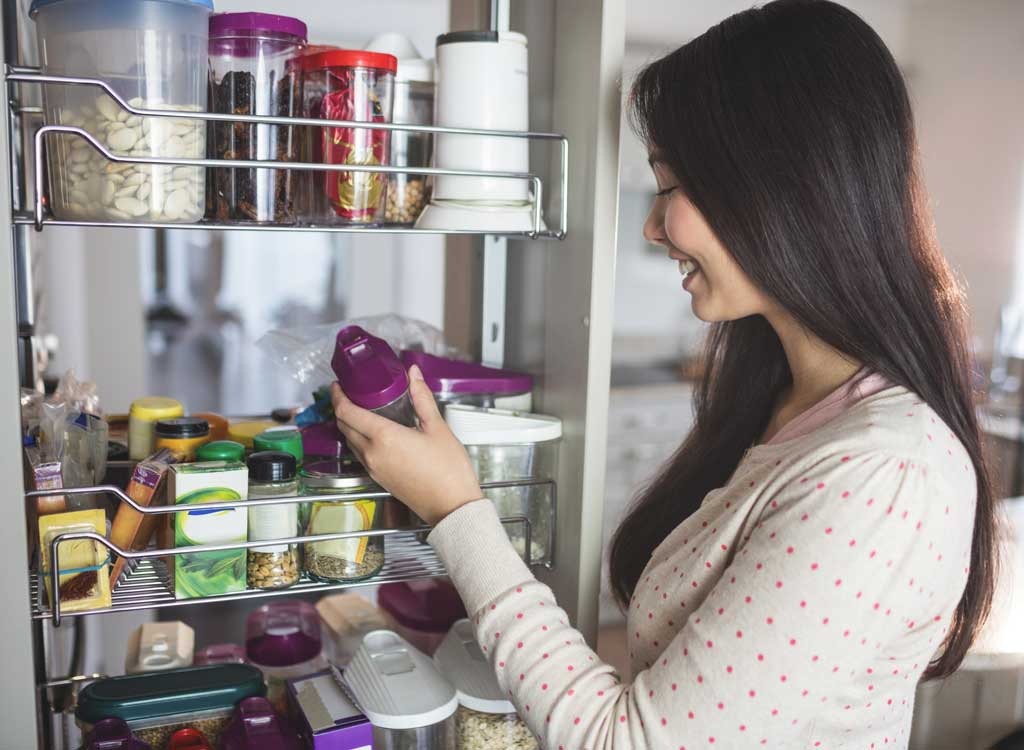
You can’t eat the things you don’t have. And when you’re in a pinch on a busy night, it’s all too easy to order take-out or heat up a frozen pizza—that is, if that’s all you have in your kitchen. Instead, read up on these 35 Healthy Foods Busy People Always Keep in Their Pantry so you can have the right building blocks to craft healthy, slimming snacks and dishes that get you closer to your body goals.
Eat This! Tip Experts recommend keeping a smaller variety of foods in your house, because, as strange as it may seem, keeping your options limited helps ward off overeating. The reason? Too many options zap your willpower—putting you at risk of indulging in those donuts your coworker brought in. At the same time, variety is also a necessary way to get all your vital nutrients. So how much variety is enough? According to a Harvard study, women who regularly ate 16 or 17 items from a healthy list of foods had a 42 percent lower risk of all-cause death compared to women who ate fewer than nine of the foods on that list.
Pick up a hobby

Bad eating habits and choices can be caused by something as simple as boredom. When you’re bored you actually lose your ability to make smart food choices. Instead, you become an “emotional eater:” making the wrong food choices and eating much more of those fattening foods than you normally would, according to a new study in the Journal of Health Psychology. In fact, “Because I’m Bored” (as opposed to “I’m Hungry”) is one of the top reasons people give when they’re asked about their emotions before they eat. Rebecca Lewis, RD, says, “Adults will reach for ‘guilty’ pleasures that they think will give them a boost. Instead, take a five-minute walk, call a friend, or try some deep breathing.” Or better yet, develop a go-to hobby you can enjoy whenever those “boredom” feelings come on.
Eat This! Tip: You feel bored when you are dissatisfied, restless, and unchallenged, according to a study in Frontiers in Psychology. The best way to beat boredom is to find something to do that is purposeful and challenging, like gardening, drawing, scrapbooking, knitting, writing, reading, or hiking. Pick something that is right for you.
Cook at home
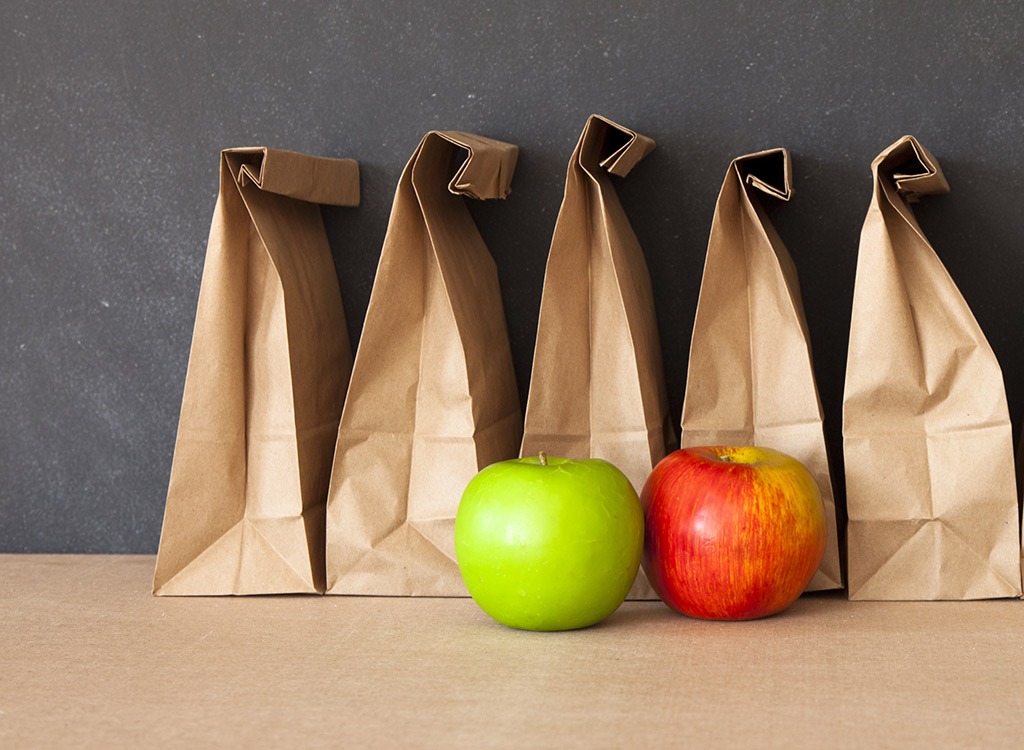
Fast food restaurants have designed their restaurants to entice you to eat more—from the faux smells to the colors of their logos. It’s just one of the 20 Things Fast Food Restaurants Don’t Want You To Know. Many companies use yellow and red in their logos (think: Pizza Hut, In-N-Out Burger, Wendy’s, and McDonald’s). These hues have been proven to grab consumers’ attention, stimulate appetite, and even increase the speed in which we eat, say University of Rochester scholars. To keep your appetite in check, drive straight thru the parking lot and cook at home. Eating in restaurants usually means less individual control over ingredients and cooking methods, as well as larger portion sizes. On the other hand, Johns Hopkins researchers found that people who frequently cook meals at home consume nearly 200 fewer calories than those who cook less.
Eat This! Tip: Start by packing your lunch every day. In a study published in the Journal of the Academy of Nutrition and Dietetics, women who went out to lunch once a week or more lost five pounds less than those who brought lunches from home. To help you get started, here are the 51 Most Popular Lunch Items—Ranked!
Get plenty of sleep

Get out of your bad habits by taking a trip to dreamland! Yes, getting some shut eye counts as changing your environment. That’s because many of us who are constantly craving those sugar-, fat-, and carb-laden treats can blame those late nights at the office. A simple switch from a desk to your comfy bed can give you the energy and enhance proper mental functioning so you can exert willpower when necessary. “Studies have found that the less sleep we get, the more apt we are to crave foods that we believe will give us energy,” says Kaufman, MS, RD, CDN a New York City-based Registered Dietitian. “I always recommend about seven hours of shut-eye to my patients to help keep cravings at bay,” she continues.
Eat This! Tip: What’s the foolproof way to stop cravings? Get some shut eye! To make it easier, turn off the lights earlier in the night. According to a study in the American Journal of Epidemiology, exposure to light at night doesn’t just interrupt your chances of a great night’s sleep, it may also result in weight gain. Study subjects who slept in the darkest rooms were 21 percent less likely to be obese than those sleeping in the lightest rooms.